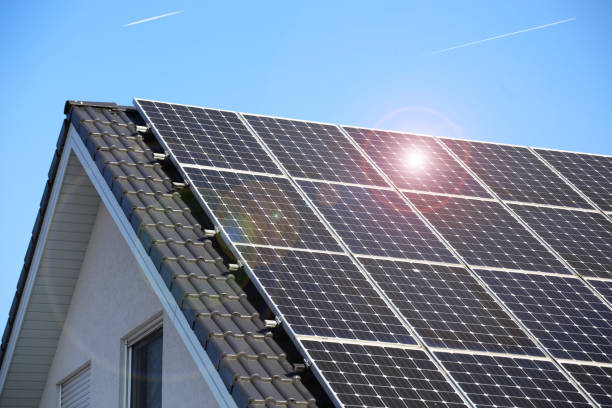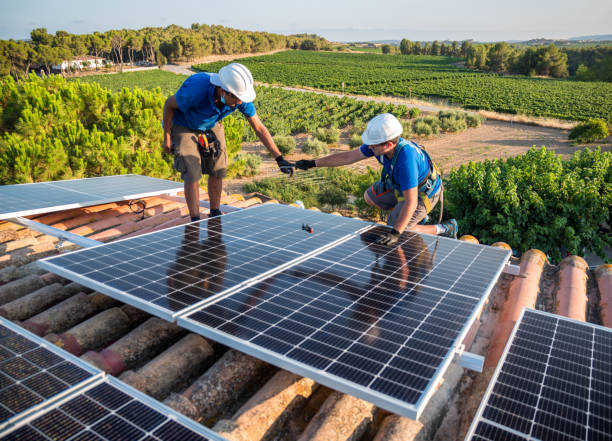The most common location for solar panel installation is on the roof. But if your roof isn’t flat, you might be wondering whether it’s possible to put solar panels on a tile roof if your roof isn’t flat. The answer is yes!
Solar panel installation on tile roofs can be a little difficult, but it’s not impossible. The solar industry now offers mounting options for all types of roofs, including Spanish, clay, and concrete tile roofs.
Some information about mounting solar panels on a tile roof will be shared in this blog.
What to Know Before Installing Solar Panels on a Tile Roof
Walk Carefully on a Tile Roof
It is well known that roof tiles are brittle. In general, you should avoid walking on them. You don’t have any other choice, however, if you’re installing a solar panel system, so take extra care.
Step in the middle of the tiles that curve toward the roof when installing solar panels on a Spanish tile roof. By doing so, you’ll be applying pressure to the tile’s peak, which is the portion that is directly on the roof surface and not the portion that is supported beneath.
You should step on the tile’s bottom edge where it overlaps the tile below if it is another type of concrete tile or a clay tile. The lower tile will act as support, reducing the likelihood of tile cracking.
To avoid putting too much pressure in one place, it is advisable to distribute your weight evenly between your two feet.
Have Spare Roof Tiles Handy
There is a good chance that some roof tiles will break even if you take all the necessary precautions. Therefore, before beginning, make sure you have a supply of extra tiles. Purchasing used roof tiles from your neighborhood roofer may allow you to make some financial savings.
Purchase extra roof tiles that have the same shape as your current tiles, as a pro tip. As your solar panels will cover the replacement tiles, they don’t necessarily need to be the same color.
Consider Installing Shingle under the Solar Array
Instead of mounting the solar panels directly on a tiled roof, many solar installers prefer to replace the roof tiles beneath solar arrays with shingles.
Solar panels are simpler to install on shingles. However, you must check that the edges where the shingles and roof tiles meet are sealed. You don’t want water to penetrate your roof and result in unsightly leaks or damage.

How to Install Solar Panels on Tile Roofs Correctly
Make a Pathway
When working with a tile roof, one trick solar installers employ is to clear a path from the ladder to the solar array by removing all the tiles in that area. In this manner, when transporting tools, racking systems, and solar panels to your installation area, you won’t have to worry about where to step.
Flash the Paper
You still need a roof to keep you dry all the time. The waterproofing magic happens under your roof tiles on the roofing paper. Flashing must be used to protect the roofing paper when mounting solar panels on the tile to stop water from penetrating underneath the paper.
Choose the Right Hardware Solution
Today, there are many options for mounting solar panels on tile roofs. Here are some possibilities.
Roof Tile Replacements:
• A complete roof tile is replaced at each solar mount with this solar mount for tile roofs (like this one from IronRidge).
• Benefits: You end up with a few extra roof tiles to replace any that might break during installation.
• The shape of your roof tiles must be compatible.
Universal Roof Tile Mounts:
• A big, flexible metal flashing known as a universal roof tile mount can be bent to fit the shape of your roof tiles.
• Works with any tile shape.
• Cons: Cutting and bending the metal flashing will take time, and there will be cuts to the existing tiles. Moreover expensive, universal roof tile mounts.
Tile Hooks:
• We strongly advise mounting your solar panels with tile hooks on a tile roof.
• Tile hooks are installed beneath the tile and have a protruding portion for holding solar racking.
• Benefits: Does not require cutting or shape matching and works with any roof tile. Choose Quick Hook mounts as they come with metal flashing to prevent water from penetrating your roof’s paper.

How to Fix Solar Panels to Tile Roof
Pre-Installation Inspection and Measurement
Taking measurements is the first step in any effective installation procedure. The installers will inspect your roof remotely or in person and choose the best location for installation based on the available space, pitch, and orientation. The location of the brackets and rail system will be determined by measurements taken from here. The location of the inverter and wiring are also determined after the roof has been evaluated.
Removing Tiles
When considering, “how are solar panels installed on tile roofs?”, the initial stages are a little different from other types of roofs. In order to prepare for mounting the mounting brackets, the installers will start removing some tiles as soon as they ascend to your roof. The installation team will remove tiles so they can access the rafters and roof structure, taking into account the measurements and length of railing required for your solar panels. The installers might also add a few small details to the roof cavity to add more mounting locations for the brackets.
Fitting the Mounting Brackets
The installers will secure stainless steel mounting brackets to the rafters after confirming the proper spacing and measurements. The removed tiles are then repositioned in their original locations after the brackets have been fastened. The tiles will be ground or cut to fit around the brand-new brackets in order to ensure that they sit flush and that the roof’s structural integrity is not compromised. Any cracked or damaged tiles will also be replaced by your installation crew.
A skilled installer will guarantee that the mounting brackets have been firmly fastened and that the roof’s waterproofing has not been jeopardized. The solar panel installers can also wrap newly installed brackets in waterproofing and flashing material if necessary.
Close Note: Pay More Attention
Solar panel installation on clay tile roofs is possible using any of the aforementioned techniques, but only by qualified experts. To make sure your home qualifies as a good candidate for a solar installation, you should speak with an industry expert before moving forward with installation.
